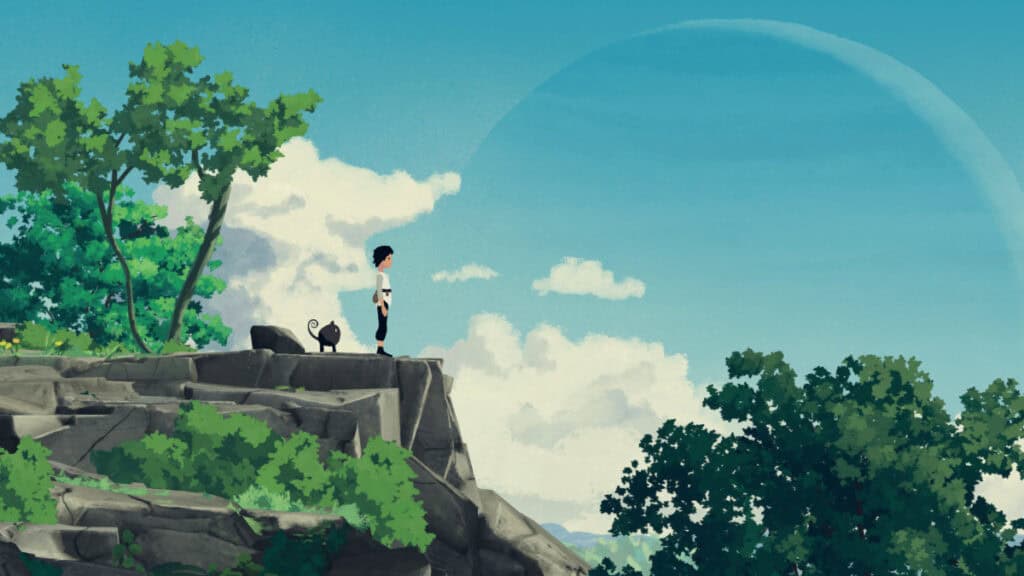Skip To...
My pot-bellied shadow cat chased a butterfly into an alien’s trap, which is pretty much the best way I’ve ever met an NPC. Some puzzle games run no deeper than whatever headscratcher they expect you to solve. Others use puzzles as a bridge to something greater. Planet of Lana uses puzzles to draw you into its world, connect you to its protagonist, illuminate the lore of the setting, and explore emotions. Though brief in length, Planet of Lana delivers tight puzzle gameplay and serious emotional impact. It’s a game that has more in common with Studio Ghibli than it does The Talos Principle. Also, it has Mui. Mui be praised.
Planet of Lana Review
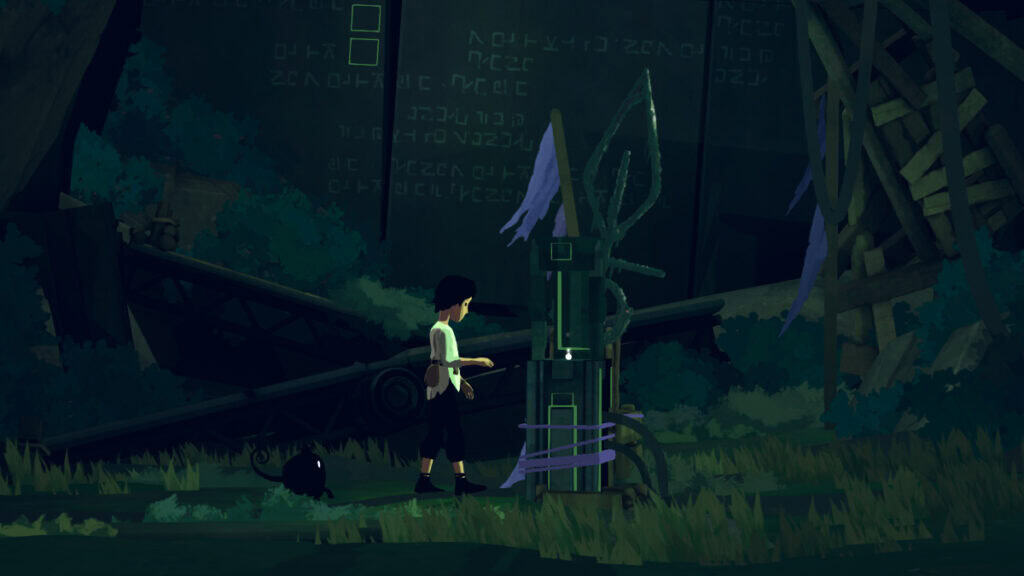
Planet of Lana is a sidescrolling platformer packed with emotion, drama, and squid-like robot invaders from space. The closest comparison is Limbo, but Lana is a far sunnier take, both in themes and color palette. Over the game’s 13 chapters (a journey of 3-5 hours), Lana and her weird shadow blob-cat companion Mui will climb ropes, jump gaps, shove crates, power alien devices, and evade the robot hunters bent on whisking them away. With only minor flaws holding it back, Planet of Lana is an easy sell for puzzle fans or those in search of a cinematic experience.
Story: War of the Whorls
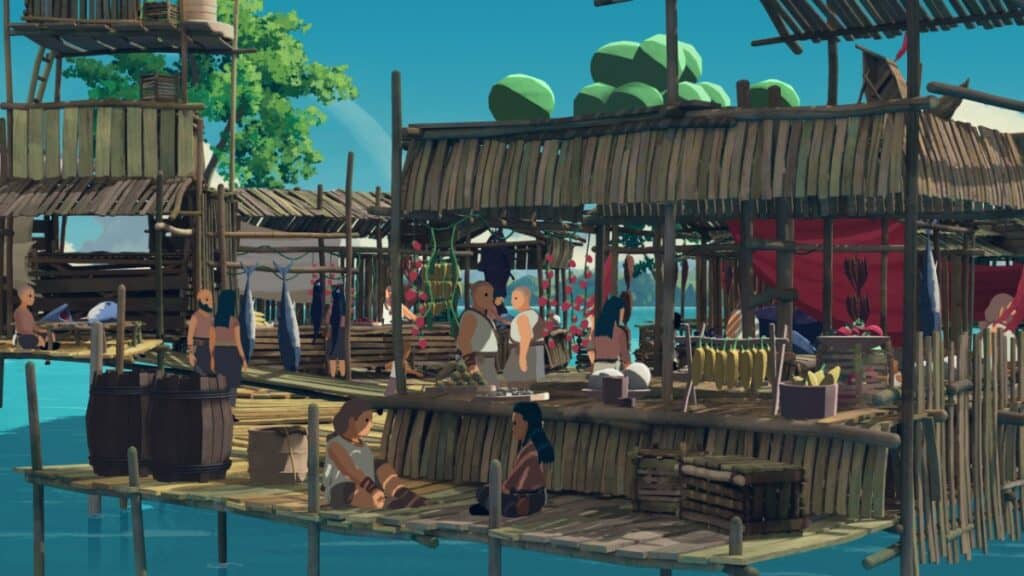
Lana and her sister Elo live in a quiet fishing village. It’s the kind of place where the biggest danger is getting glared at by the mean woman who runs the kitchen (sneaking past her is your first stealth mission). The game’s intro follows Lana as she chases playfully after her big sister, following her away from the docks and into the forest. There, the two share a reflective moment at a gravesite, presumably their parents. Despite communicating in what might as well be Simlish, the love between the two is obvious.
Their peace doesn’t last. Strange objects streak through the sky as something (or someone) descends from the heavens. It’s a fleet of spidery robots. Lana watches helplessly as the invaders snatch Elo up in one of their cages and whisk her way. Lana hurries back to the village, desperate to catch up with the thing that kidnapped her sister, only to find that the scale of the invasion is worse than she could’ve imagined. It feels like War of the Worlds as imagined by Studio Ghibli, and I struggle to think of a single way it could’ve been done better.
A short time into her rescue mission, Lana encounters Mui, the aforementioned pot-bellied shadow cat thing. Mui is silky, squeaky, and great at solving puzzles (and keeping me from getting one-shotted by electrode-wielding robots). Also, you can pet Mui, which is pretty much the only way I could’ve liked this character any more than I already did. Although Planet of Lana is wordless, the art and animation make Mui’s personality clear. Mui likes chasing butterflies. Mui dislikes getting caged by mean-bad-awful robots.
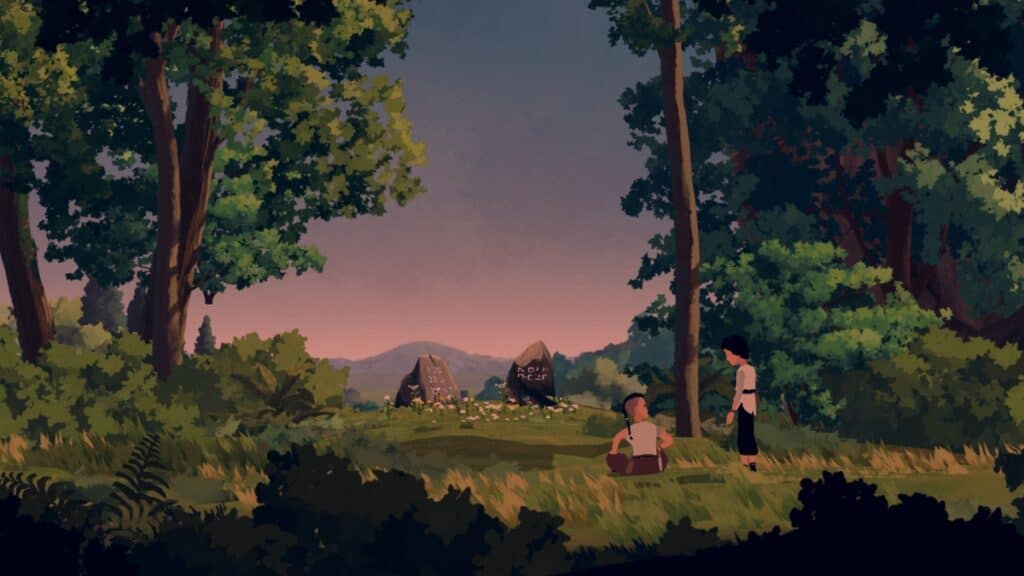
Planet of Lana is the story of a girl trying to save her sister, and it’s more heartfelt than it has any right to be. It’s rare, in my experience, that puzzle games deliver deep narrative experiences, although there are obvious outliers like Portal and Myst. Lana is an exquisite exception. It manages to capture more authentic emotion in its tutorial than some narrative-driven games do in their entire runtime. If you can deliver as much as The Boy and the Heron, you’re doing something right.
Like Limbo, Planet of Lana takes some surprising emotional turns as it runs its course. For fear of spoiling any of its excellent story beats, I’ll just say that I enjoyed everywhere this little tale took me. My only real complaint with the story is that there’s not enough of it. Like a great short story that leaves you pining for the novel that will never be, Planet of Lana is an almost perfect morsel. It packs so much vibrancy, character development, and thematic weight into its few hours that I can’t help but rage (just a little bit) that there’s not more of it to savor.
Gameplay: Painterly Puzzles
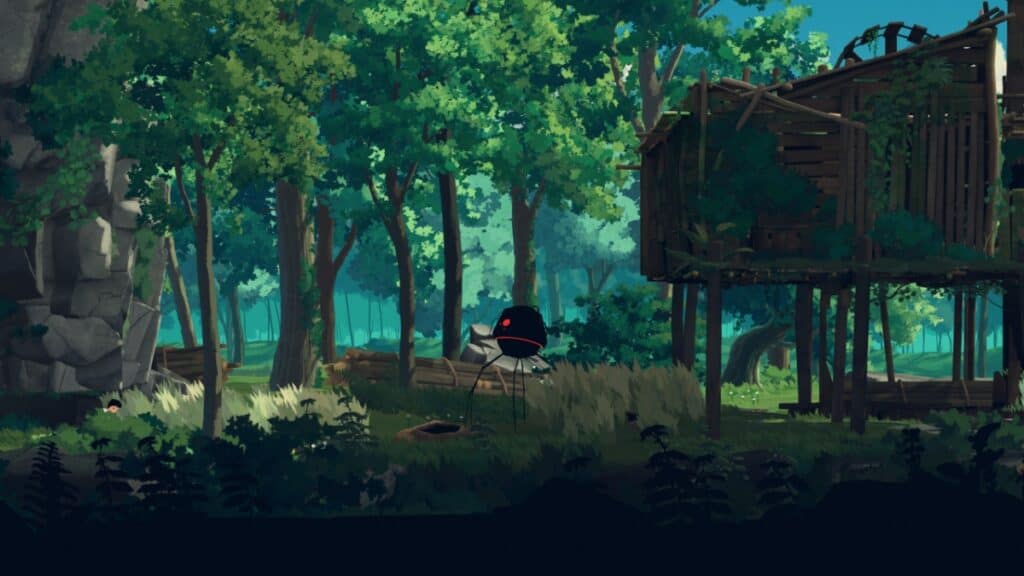
When Lana is alone, fans of 2D puzzle-platformers could likely predict her every action. You jump gaps, climb ropes, step on buttons, and haul boxes around to serve as improvised platforms. Like your favorite fast food, it’s nothing we haven’t seen a hundred times, but it’s none the worse for the repetition. At least here there’s no salt or fats to fret about. It’s not until Mui joins the action that Planet of Lana opens up. If you’ve played any great co-op puzzle games, you’ll already have a good idea of what’s coming now that you have two bodies to work with.
Using two characters to solve puzzles in a colorful world evokes It Takes Two for obvious reasons. That said, The Last Guardian may be the best comparison. Thankfully, you can give Mui direct orders. That means you’re not at its mercy the way you were at Trico’s in Fumito Ueda’s game. Tell Mui to scurry through small holes to press buttons on the other side. Have Mui sit on a pressure plate while you scramble up some rocks on the other side of the room. Mui can dig through tunnels, toss down ropes, and do a dozen other useful things that make me love it more than its ink-blob body already does.
I’m the kind of person who gets stumped by Resident Evil puzzles even if I’ve already solved them in a previous playthrough. I’m therefore delighted to report that Planet of Lana strikes a fair balance in difficulty. I only got badly stuck once (looking at you, pipe organ cave). In hindsight, the game gave me all the info I needed to solve it. I’ll be the first to say mea culpa and skill issue. The point being, I think the average puzzle fan will do just fine. If anything, many players are likely to find it too easy.
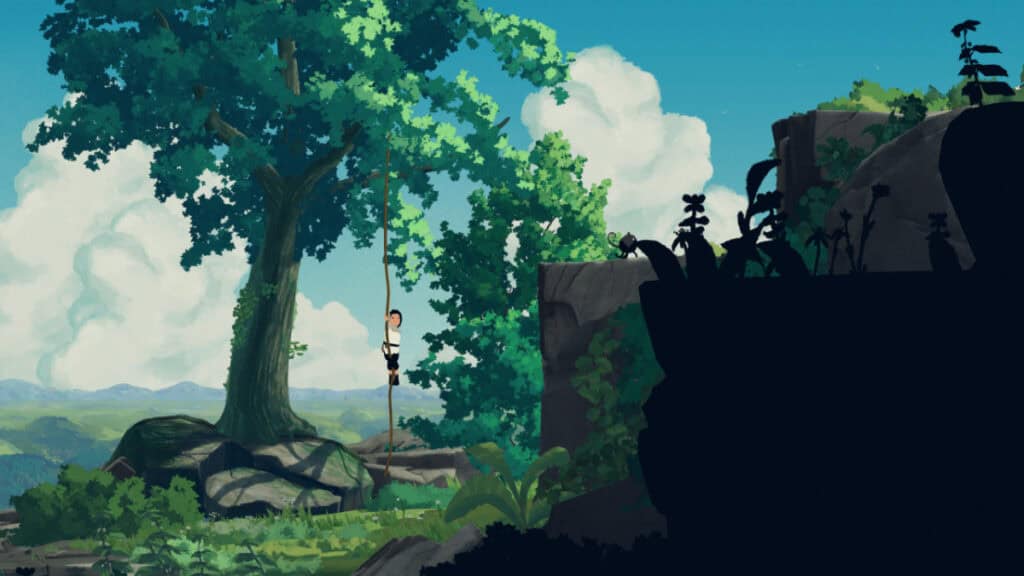
In addition to puzzles, Planet of Lana also features some Limbo-style escape sequences. Lana’s world is home to wild boars, cyclopean alligator-snakes, and living rocks with dozens of tentacles for feet. Every enemy in the game can one-shot you, although there isn’t any combat in the traditional sense. Instead, action sequences play out more like (panic-inducing) puzzles with the occasional QTE thrown in. If you’re a die-hard hater of Quick-Time Events, you can turn them off in the Options menu, however. My interactions with the world’s deadly denizens were some of my favorite moments in the game, in part because many of them are enthralling in an “ew, gross, why?” kind of way.
Stealth sequences and chases help break up the cart-shoving and pressure plate-triggering, but they’re just puzzles of a different sort. Hide in some tall grass while you direct Mui to emerge from a tunnel, capturing the attention of a giant spider robot long enough for you to slip past. If you’re the type to get a lump in your throat sneaking past the Twin Chefs in Little Nightmares or fleeing from the spider in Limbo, there are moments in Planet of Lana that are likely to do the same. That said, Lana isn’t nightmare fuel the way those games are. Creepiness here is the exception, and you’re always spat back out into the sunshine soon enough.
Overall, Planet of Lana does a decent job of innovating its simple mechanics and introducing new puzzles throughout the game. Even when a familiar sequence does appear, the setting is often so different that it feels new, more or less. Somewhat repetitive jumping sequences, for example, hardly feel the same when you see them first in the sun-bright woods and the second time in a cave, illuminated only by bioluminescent mushrooms. Planet of Lana doesn’t like to copy, even from itself.
Graphics & Audio: Near Nirvana
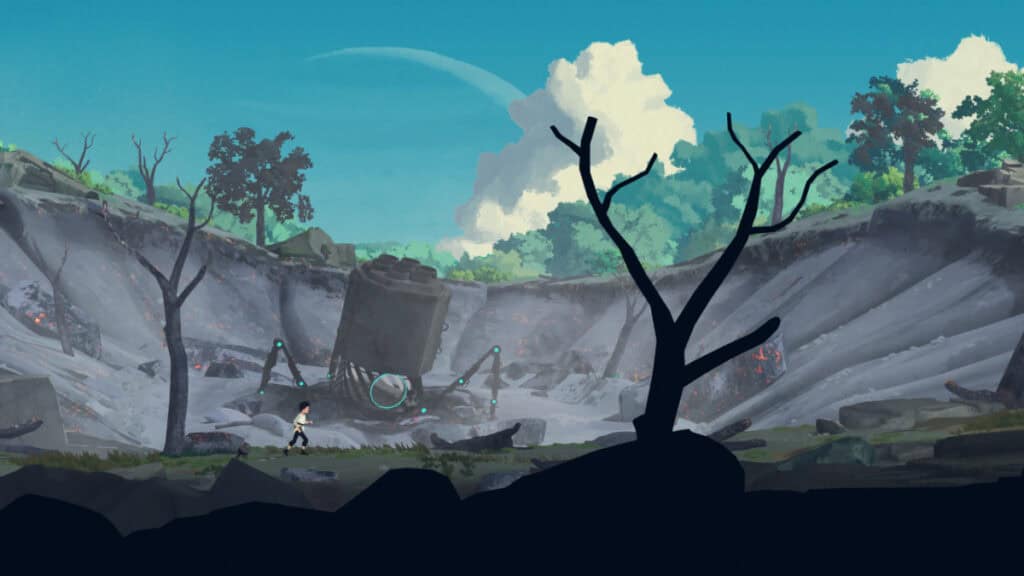
Squatting down to shimmy through the tunnel, Lana arrives at a crude wooden barricade. Taking hold of the planks, she pries them free one by one, the wood cracking from the strain before popping loose. The path now clear, Lana whistles, and Mui leaps up the cliff face to join her. Lana points ahead in the dark, directing her companion through the narrow tunnel to the button on the other side. Without hesitation, Mui leaves the expressionist clouds and swaying grass behind for the deep shadows of the cavern.
Planet of Lana is an unfairly pretty game. Unfair, that is, to its comrades in the genre, which now need to exist in a world in which Lana is a thing. The game makes so many great decisions regarding its visuals that it’s hard to know what to praise first. The tonally perfect color palette? The brilliant use of foreground and background layers to create depth? The utter lack of HUD except for occasional interaction prompts? Lana knows how good it looks, and it wants your focus there whenever you’re not head-scratching your way through a puzzle.
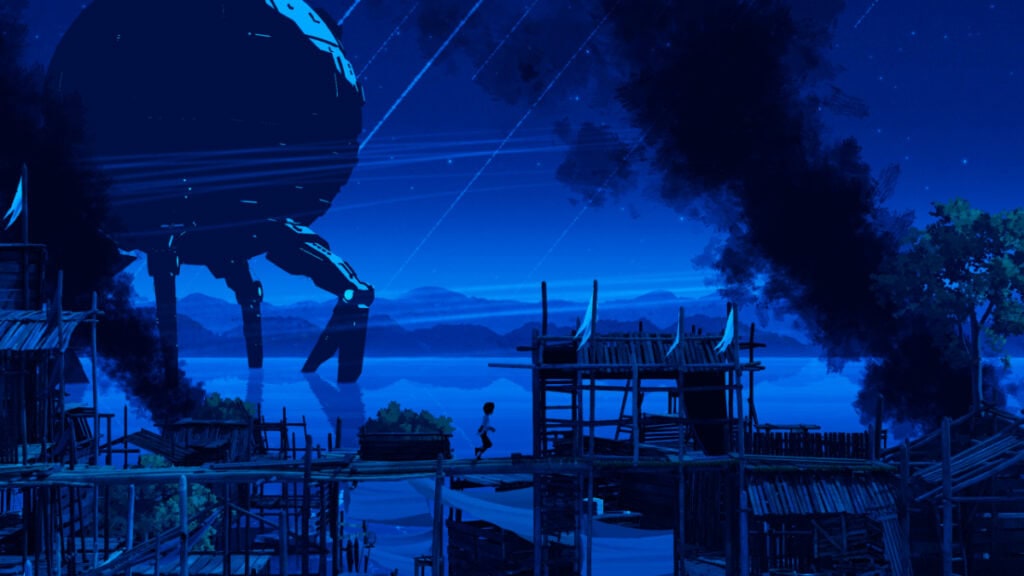
Many of the character designs are predictable, and there’s a severe lack of enemy variety. Thankfully, neither of those are crucial elements. If the rest of the game weren’t so nuanced, vibrant, and frankly beautiful, these weaknesses wouldn’t be so glaring. Here Planet of Lana suffers from its own success. Its SFX and OST, meanwhile, are fantastic. From the wrenching of boards to the quiet impact of Lana’s feet hitting the grass after a jump, the game’s audio is almost as good as its graphics, which is the best compliment I can pay it.
Planet of Lana‘s animations deserve a special shoutout. There’s a reason Studio Ghibli is one of the best reference points for the way the game feels. It’s platforming isn’t the smoothest, but that’s not what I’m talking about. I mean the way Lana stumbles when she falls from just a little too high. I mean the way Mui darts up the side of a cliff as the platform beneath it falls away. Lana infuses small actions with personality, which is probably how it conveys so much emotion without saying a word. It’s a different style of storytelling, and it works.
Conclusion: Playable Cinema
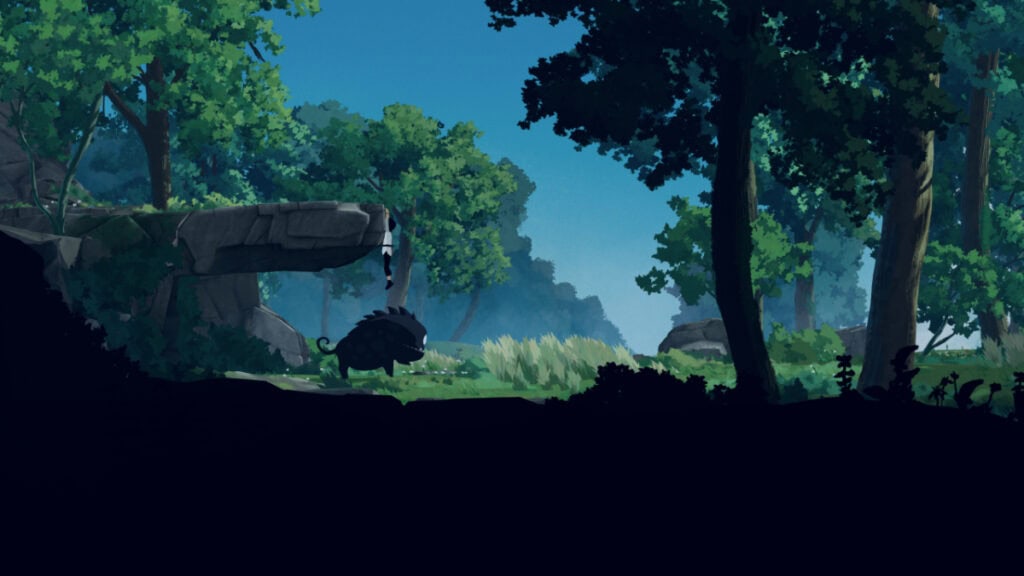
I experienced no crashes and no noticeable bugs during my playthrough. Planet of Lana is the rare game you can justifiably call “an experience.” Although it’s a good puzzle game, I don’t recommend it for its puzzles. I recommend it for the cinematic journey it takes you on. I recommend it for the highs and lows, the gorgeous vistas, and Mui. There are better puzzle games, but in art school, Lana is one A away from valedictorian. If you finished Limbo and still have more heart left to break, play Lana.
Planet of Lana is available for PC (reviewed), PlayStation 4, PlayStation 5,
A stunning puzzle adventure with a heartfelt story and polished (though sometimes predictable) action.
Pros
- Phenomenal graphics
- Touching storyline
- Mui
Cons
- Brief length
- Inconsistent platforming
- Lack of enemy variety

